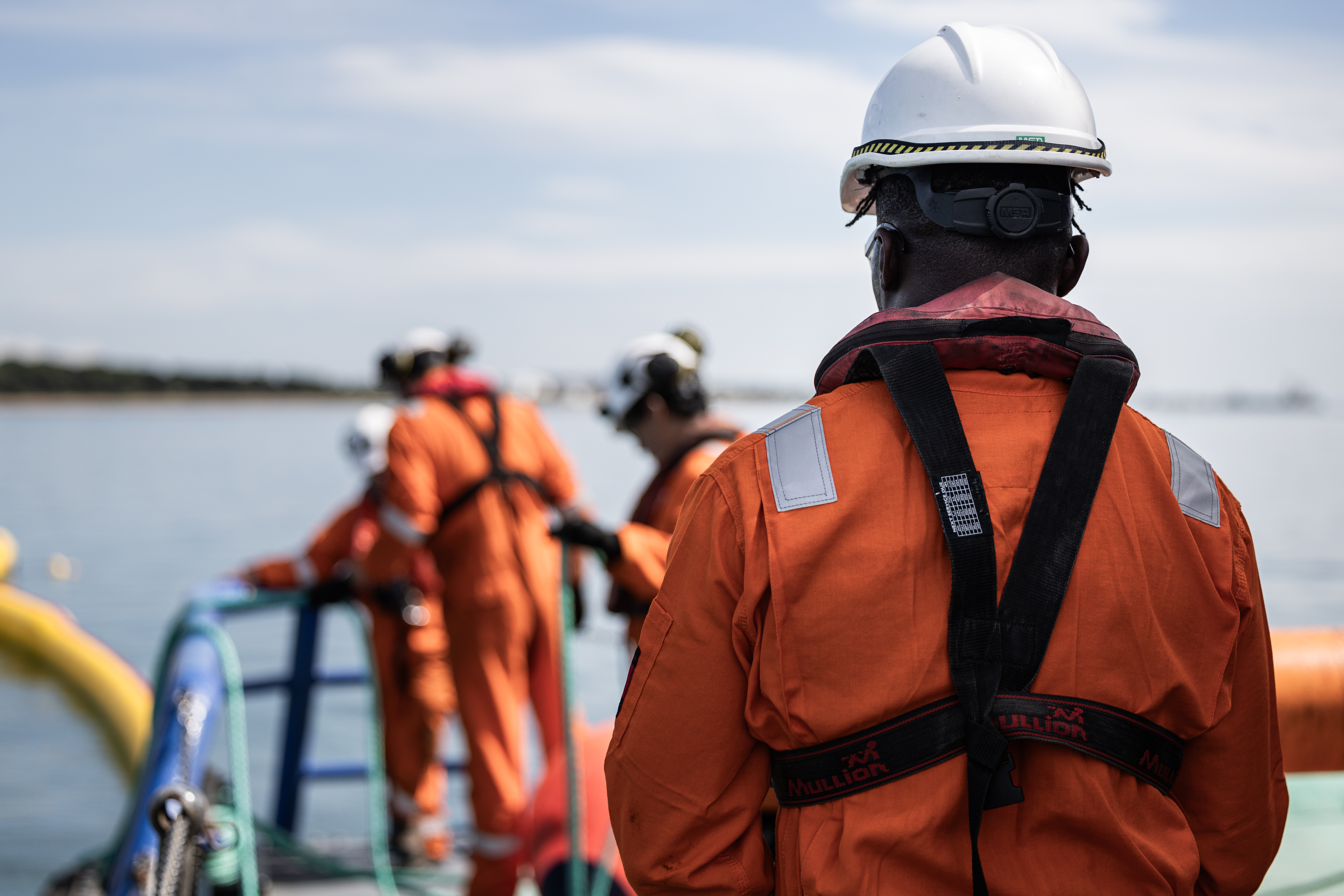Oil Spill Contingency Planning Guide
The process of creating an up-to-date and tailored oil spill contingency plan (OSCP) is a key step to ensure preparedness for organisations at risk of an oil spill. Here we dive in to discover what a contingency plan is, its scope, how to plan supporting documents and how OSRL can help.
Past research on the importance of contingency planning has demonstrated that having a well-written and exercised OSCP, offers the possibility of reducing the potential impact of an incident on people, the environment, assets and business reputation. This requires adequate resources, well-trained people, suitable equipment, well-executed scenario planning, and tiered preparedness plans. An effective OSCP will be user-friendly, concise and tailored sufficiently to meet an organisation's requirements whilst following country-specific guidelines.
What Is A Contingency Plan?
The objective of an OSCP is to minimise the impact of an oil spill on the environment and to respond quickly and effectively. An oil spill contingency plan is not just a document or series of documents – it is a whole process, although part of its output is a framework of key documents. The contingency planning process is a structured approach to developing a spill response capability. It allows an effective initial response to an oil spill and sustains an ongoing response proportionate to the risk.
An effective response to an oil spill event rests upon four key pillars:
- Competent personnel
- Regular exercises
- Adequate resources
- A well-developed contingency plan
Scope Of An Oil Spill Contingency Plan
The major components of the contingency planning process we operate at OSRL begin with defining the planning scope. The OSCP is a document or series of documents; the contingency planning process establishes a robust tiered preparedness and response framework.
Any corporate guidelines, local and national legislation that underpins the development of the OSCP should be reviewed at this point. Key stakeholders should be engaged at this stage and consulted throughout the process as required. You can learn more about the socio-economic impacts of marine oil spills.
The three tiers of oil spill risk and oil spill response are laid out and clearly defined at this stage and form the basis of a response framework. This informs the ‘Tiered Preparedness and Response’ wheel, Fig.1:

Oil Spill Planning Scenario Development
The scenario development stage entails an risk analysis covering the full range of potential risk and response challenges and identifying planning scenarios.
Once we have this overall risk analysis, we can then drill deeper into:
- Response strategy development We separate this into Strategic and Tactical response plans (See Fig.2)
- Determining the response capability
- Creation of the Oil Spill Contingency Plan (OSCP) and associated documentation (including Strategic and Tactical response plans)
An OSCP details the actions required to prepare for and respond to oil spills. It will cover different planning scenarios (including the worst credible case scenario) based on the risk assessment. It should also indicate a suitable response strategy from applicable techniques based on the likely oil spill fate and sensitivities in the area.
One of the critical take-homes of the contingency planning process comes at the end of this rollout. It is essential not to consign the OSCP to a dusty shelf. It must be revisited continuously, ensuring the OSCP meets the company's needs while reflecting any new, evolved or changed risks. An expert review provided by a specialist such as OSRL may periodically be required to reassess the risk and regulatory framework, ensuring that the response capability which is already in place is sufficient.
Strategic and Tactical Response Plans
Currently, response plans are designed to meet regulatory compliance requirements and generally describe the actions during the initial 0-48 hours (reactive mode) of an incident. For spills requiring an ongoing response (proactive mode), it is recognised that more detailed set of information is necessary to manage the response effort more efficiently.
Industry good practice promotes the benefit of having Strategic and Tactical Response Plans. The availability and development of such a plan will give clarity during the initial and/or proactive response phases of an oil spill.
Fig.2: Most OSCPs will have supporting documentation which includes both Strategic and Tactical response plans if the client requests them to be in the document. The level of detail which is provided in both is given as a comparison below.
| Strategic Response | Tactical Response |
| The Strategic Response Plan provides specific response information based on medium to longer-term response management objectives and details the means of achieving them. The document is of benefit to those responsible at the decision-making level. | The Strategic Response Plan provides specific response information based on medium to longer-term response management objectives and details the means of achieving them. The document is of benefit to those responsible at the decision-making level. |
| Likely topics and content | Likely topics and content |
| Planning Scenarios - including worse credible case | Mobilisation of tiered capability - including Resource inventory specialist resources |
| Overview of applicable response techniques - their effectiveness and limitations | Specialised subject-specific plans - shoreline assessment, sampling and monitoring, wildlife protection and response, waste management, decontamination, and demobilisation |
| Response strategy selection for planning scenarios based on completed Net Environmental Benefit Analysis (NEBA) | Personnel requirements - including a definition of management team roles and responsibilities, provision of field supervisors and labourers |
| Input from subject matter experts - Subsea-surface Dispersant, Waste Handling or Wildlife experts) | Equipment deployment and operations - including deployment methods and schematics, constraints and limitations of use and waste management support |
| Relevant mutual aid agreements or industry cooperative support | Communications |
| Areas of responsibility and liability during the response - meeting cross-border movement requirements | General response information - including health and safety guidelines, in-field communications, documentation requirements and forms, safety and security protocol |
| Applicable tiered resources for each response strategy using the 'Tiered Preparedness and Response' wheel (Fig.1) | |
| Response capability summary overview - offshore containment and recovery, in-situ controlled burning | |
| Map of the tiered resource locations | |
| Plan justification and other preparedness material, including risk assessment and scenario planning, spill prevention and detection, training and exercise programme, contingency plan, equipment review and audit |
You can learn more about OSRL’s strategic and tactical planning services.
Getting Started
OSRL can manage the entire contingency planning process for your company. You can learn more about this contingency planning service. Alternatively, OSRL can manage components of contingency planning such as oil spill modelling, sensitivity mapping, SIMA production, or response exercise design.
Because training represents one of the critical pillars of contingency planning, a perfect place to get started, whether you represent an oil terminal, port, harbour or any other 'at risk’ activity or facility, is for key personnel to attend one of our highly rated one-day courses developing knowledge of Oil Spill Response Methods for First Responders.
Delivered at many of our bases globally throughout the year, attendees practice deploying equipment needed during a first response along with enhancing their understanding of how the environment influences the behaviour of spilled oil, which in turn affects response priorities.
The main objective of this 50% hands-on and 50% classroom-based course is to familiarise team members with the different tools and equipment used during a first response and for them to be able to experience deploying these safely and efficiently.









